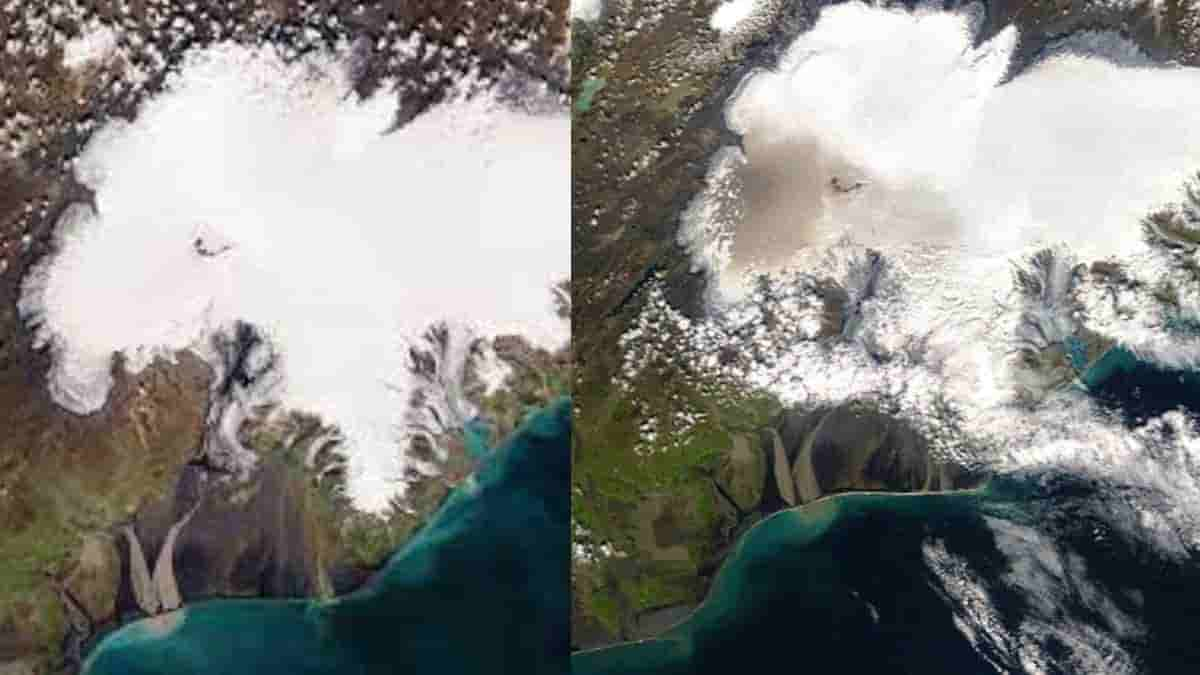NASA says no volcanic activity but windstorm is responsible for the grey layer on Vatnajökull

NASA has reported that Iceland’s Vatnajökull glacier which is responsible for the nation’s 8% of white ice cover has been observed to grow gray and brown in color. NASA has acquired images of the grey Vatnajökull glacier with the Moderate Resolution Imaging Spectroradiometer (MODIS) on the Terra satellite.
According to NASA, ashes developing from nearby volcanic eruptions have been observed to cover the ice sheet in the past but in July 2022 there was no trace of any volcanic activity in Iceland. Scientists state that a possible windstorm has carried away sands and dust from the ground onto the ice cap. They said that almost 4.5 million tons of dust reach the top region of Icelandic glaciers each year.
Scientists estimated that dust comes from heavily eroded parts of the fronts of glaciers and sands come from deserted areas. Iceland has been witnessing dust storms each year when strong winds carry dust and sands to disperse around the country. Even eroded ice sheets of Greenland are responsible for Iceland’s dust pollution for situating near. Iceland is affected by almost 135 dust days. However, these dust storms are mostly local and the nation has special weather stations to detect the amount of dust particles in the air.
The thin layer of dust and sand on top of the Icelandic glaciers is observed to reduce sunlight and protect the ice sheets from melting due to heating. NASA has posted an image of thin dust layers (appearing grey-colored) formed on top of the thick white Icelandic glacier consequently protecting it from sunlight.
Windstorms lofted sand and dust onto the Vatnajökull ice cap, which blankets about 8 percent of Iceland. https://t.co/VK7lwuy8UI pic.twitter.com/y0ShOVNp6n
— NASA Earth (@NASAEarth) August 1, 2022


